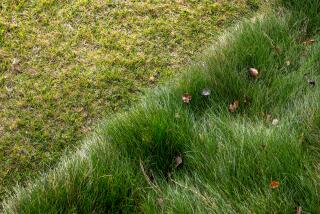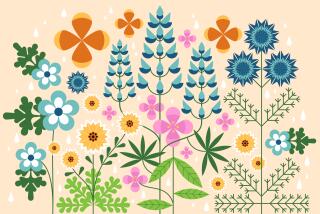Q: We would like to establish...
- Share via
Q: We would like to establish wildflowers along the approach road to our home. Can you suggest the type that we should use? Isn’t a mix best?--E.A., Chino A: Yes, planting mixes of wildflower seed rather than single varieties is preferred because one or more of the seed types most adaptable to that location will survive. By using a mix, you can depend on getting some color, and although some wildflowers are sure-fire almost anywhere, a mix might contain some happy surprises that just happen to thrive in your area or soil. A good wildflower-seed mix would contain lupine, poppy, phacelia, nemophila, layia, godetia, gilia, collinsia and clarkia. The poppies and late-blooming clarkia are sure to grow, and depending on the soil and surroundings, any of the others might too. One more tip: Sow the seed just before winter rains are expected to begin. Natural rainfall does the best job of germinating wildflower seeds.
Q : Do the watering needs of house plants change according to season? I water my plants on a regular basis--three times a week--regardless of the time of year because my air-conditioned apartment has constant temperature and humidity.--G.W., Los Angeles A: Like plants grown outdoors, evergreen house plants go through growth cycles that should be recognized in your watering schedule. Even though temperature and humidity are fairly constant indoors, house plants need a rest period during which their growth slows and less water is required. That happens, for instance, immediately after new leaves appear or flowers bloom.
Q : Is now the time to fertilize a bluegrass lawn, or should I have taken care of that job several months ago? -- M.F., Torrance A: Cool-season grasses such as bluegrass, bentgrass and fescue should be fertilized either in the fall or spring--never during the summer--so now is a fine time. As the term suggests, cool-season grasses do not grow as actively during the hot months as they do at other times. Their root system is, in fact, semi-dormant during the summer, but springs back to life as the weather cools.






